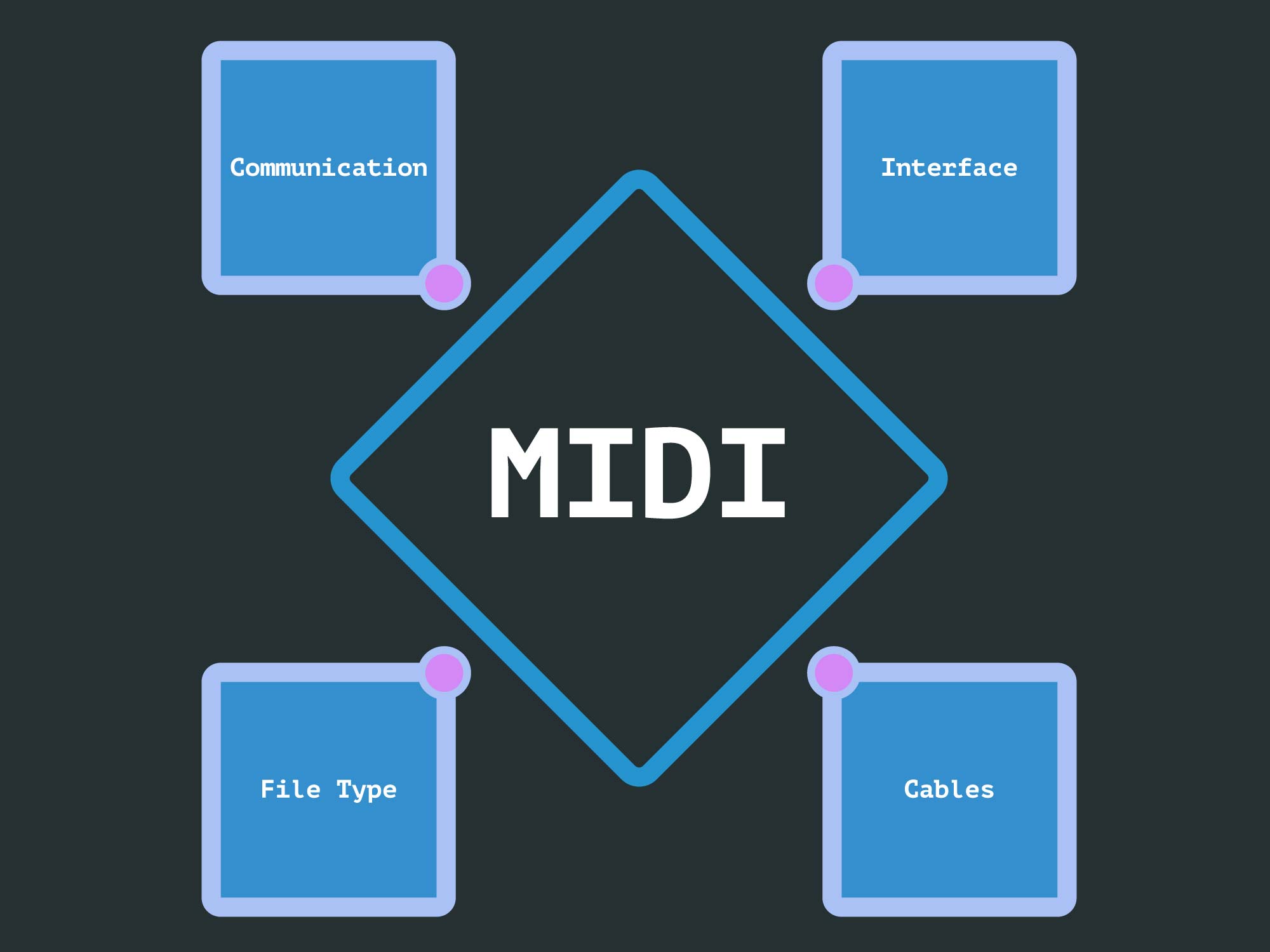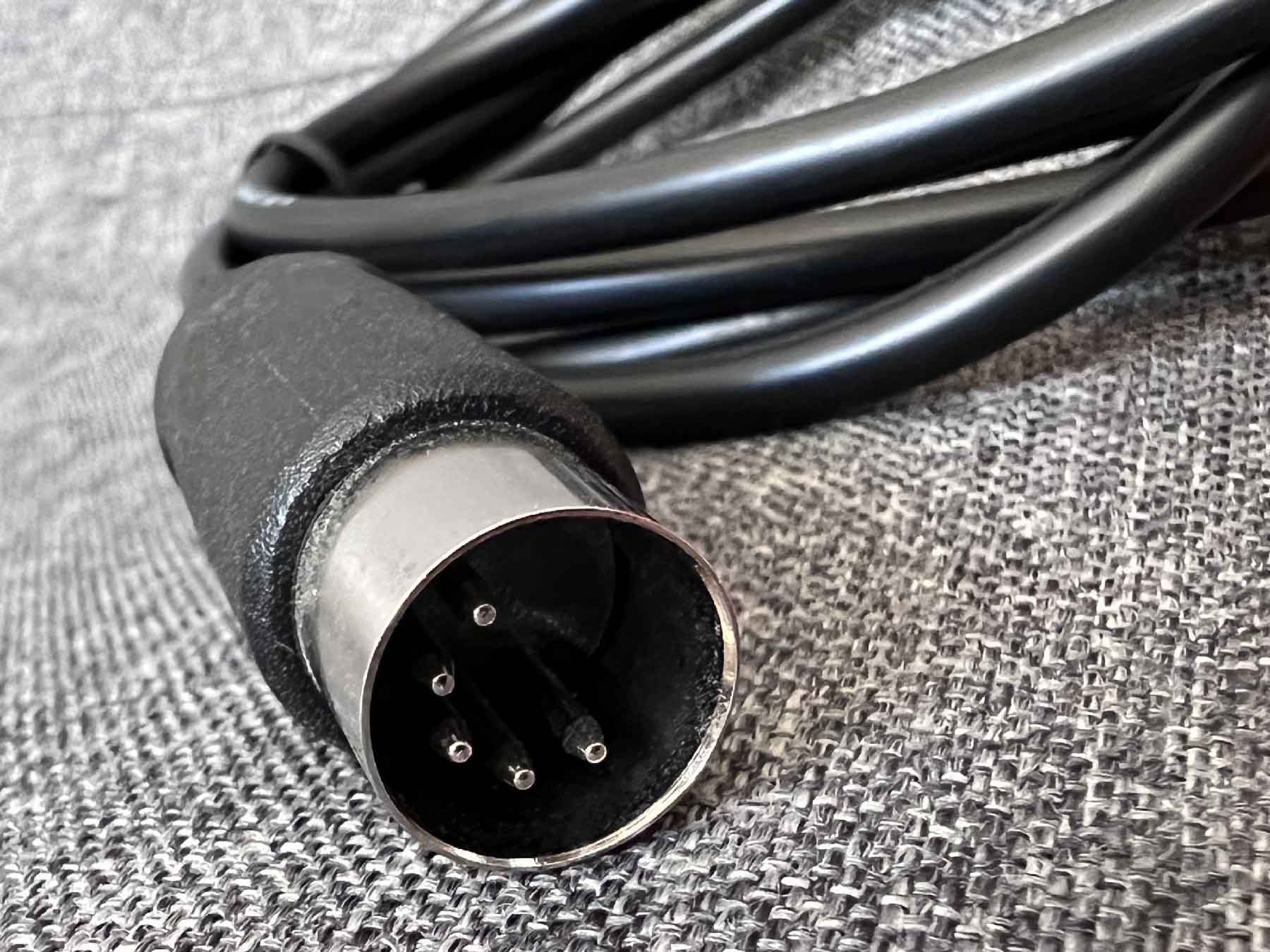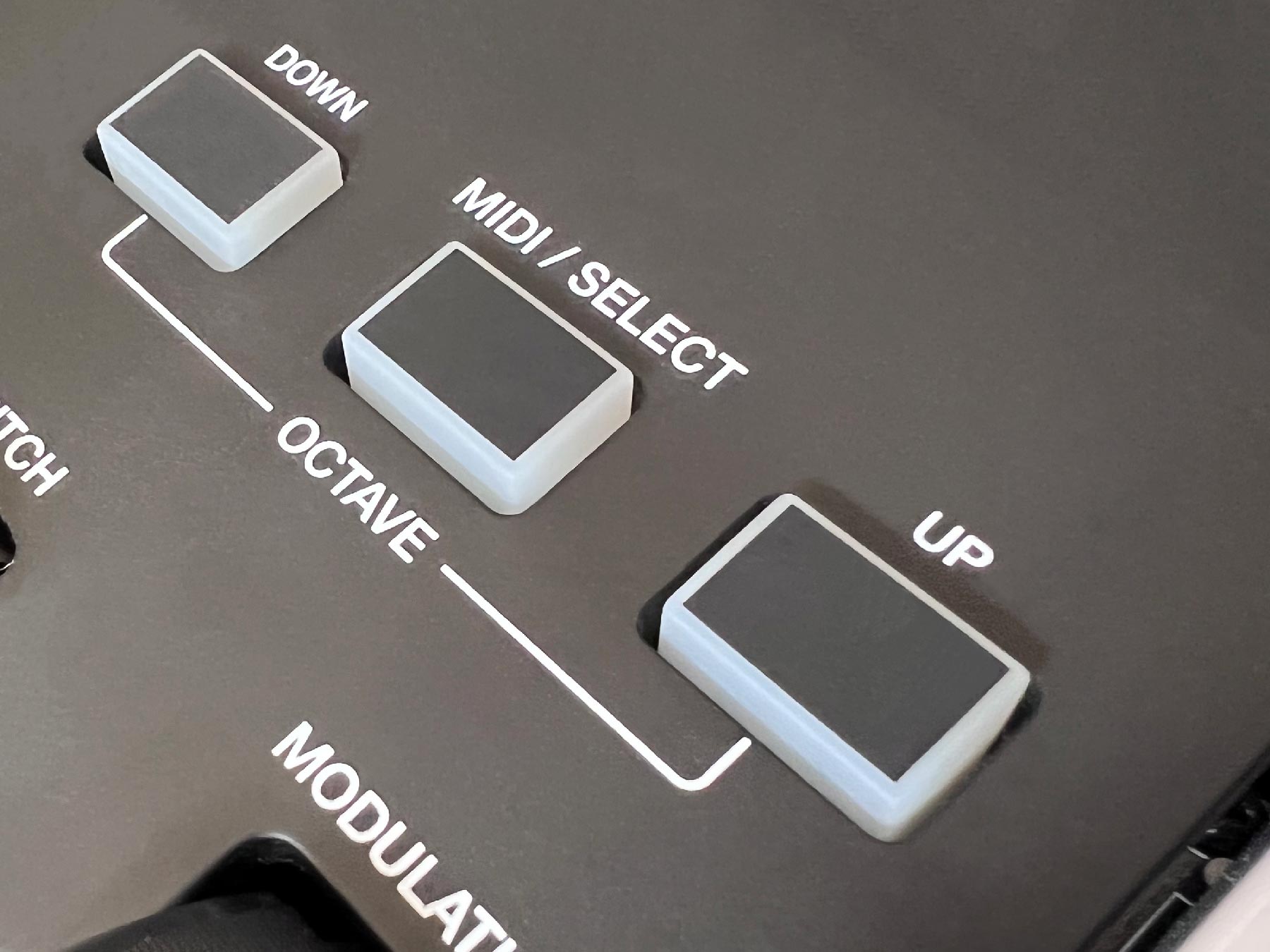What is Midi?
The word “MIDI” is an acronym for “Musical Instrument Digital Interface,” but what is it? What is MIDI? This is a short question with a long answer. To help answer this question we’re going to represent MIDI as a square. There are four sides to the square that make up what MIDI is. Number one, MIDI is a digital communication between musical instruments. Number two, MIDI is a digital interface between instruments and computers. Three, MIDI is a type of cable that physically connects instruments, interfaces, and computers. Lastly, MIDI is a file format that contains MIDI data about the communication between the instruments and computers. It stores the information about a song composition, but NOT the actual sounds.

MIDI Communication
MIDI as a communication created a standard protocol that once adopted made it possible for instruments and devices from different manufacturers to communicate. Any MIDI-compatible device can talk through MIDI to another MIDI-compatible device. MIDI allows a keyboard or controller from one brand to send instructions to an instrument from another brand. This was the original intent behind MIDI. It was created so that one digital or electronic instrument could communicate with another or control it. Before MIDI this was not possible across different brands. As an example, imagine if your phone could only make calls to other phones of the same brand. This was the case with instruments before MIDI.
MIDI Interface
In order for MIDI communication to happen between different devices, a common or universal interface for MIDI was needed. MIDI as an interface became that connection that allowed synchronizing instruments. Before MIDI connections, manufacturers had their own proprietary connections and interfaces. MIDI unified all electronic instruments but it didn’t happen overnight. It took many companies to sit down, discuss, and ultimately agree on what MIDI would be. It has become an interface that is able to communicate through USB and MIDI cables.
MIDI Cables
We’ve established that MIDI is a communication that allows devices to talk. It’s able to do so because a standard MIDI interface was agreed upon by different manufacturers. What’s next is that communication needs to be delivered over a cable. A MIDI cable can carry up to sixteen channels of MIDI data. Each of those sixteen channels can be routed to a separate device. The MIDI cable is a 5-pin DIN connector, although a number of other standards are now supported like USB and FireWire.

MIDI File Format
MIDI is also a file format. It is a relatively small file size that allows storing information about the composition of a song in MIDI instructions. The instruction in MIDI are things like when a key is pressed, when a knob is turned, etc. The unique thing about MIDI is that it doesn’t store or define actual sound. As a result, a MIDI file could be used to playback a song composition with different instruments than originally recorded with. You could have a MIDI file for the song, “Take Me Out To The Ball Game” which is traditionally played with an organ, played by a synthesized electric guitar!
CONCLUSION
MIDI is a powerful technology that created a standard for open-source communication between digital and electronic instruments. It allows instrument control through a common communication, interface, cable, and file type. To this day MIDI continues to evolve and be improved upon. MIDI 2.0 is rolling out with a number of upgrades like support for bidirectional communication as well as wireless connections. MIDI is a great example of how a uniform open source protocol can grow to a standard and make all our lives better.
